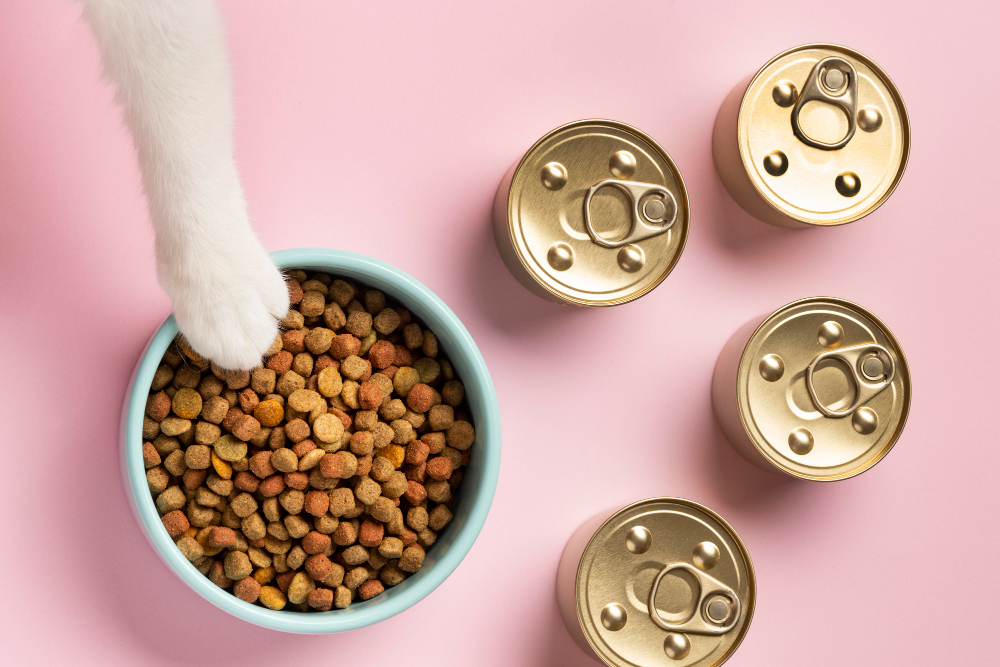As devoted cat parents, we want nothing but the best for our feline friends, especially when it comes to their nutrition. Providing a well-balanced and cat-friendly diet is essential for their health and well-being. However, with a plethora of information and conflicting advice out there, it can be daunting to navigate the world of cat food. In this comprehensive guide, we’ll unravel the mysteries of feline nutrition, explore cat-friendly foods, and provide dietary guidelines to keep our furry companions purr-fectly safe and content.
Carnivores at Heart: Understanding a Cat’s True Nature
Before diving into specific cat-friendly foods, it’s crucial to understand that cats are obligate carnivores. This means that their bodies are biologically designed to thrive on a diet primarily composed of animal-based proteins. In the wild, cats would consume a diet consisting mainly of meat from their prey, making it essential to replicate this carnivorous nature in their domestic diets.
The Meat of the Matter: The Importance of Protein
Protein is the cornerstone of a cat’s diet, providing them with essential amino acids necessary for muscle development and overall health. When selecting cat food, ensure that the primary ingredient is a high-quality source of animal-based protein, such as chicken, turkey, fish, or beef. Avoid foods with excessive plant-based proteins, as they are not as beneficial to cats and may lead to nutrient imbalances.
Navigating the No-Nos: Foods to Avoid
As much as we adore our cats, it’s vital to recognize that certain human foods are harmful to their health. Foods such as chocolate, caffeine, grapes, onions, garlic, and alcohol can be toxic to cats and should be strictly avoided. Additionally, dairy products may cause digestive upset in some cats due to lactose intolerance. Always consult with your veterinarian if you suspect your cat has ingested any harmful foods.
The Wet vs. Dry Dilemma: Weighing the Pros and Cons
One of the age-old debates in feline nutrition revolves around wet food versus dry food. Both options have their advantages and disadvantages. Wet food provides cats with added hydration and tends to be more palatable, making it an excellent choice for finicky eaters or cats with dental issues. On the other hand, dry food can aid in dental health by helping to clean teeth during chewing. Combining both wet and dry foods in your cat’s diet can offer a well-rounded approach to nutrition.
A Fishy Situation: Moderating Fish in the Diet
Fish is often a favorite among cats, but it’s essential to moderate its inclusion in their diet. While fish provides valuable omega-3 fatty acids, excessive consumption can lead to a nutrient imbalance, specifically in calcium and phosphorus levels. Too much fish can also result in thiamine deficiency, causing severe health issues. Offer fish as an occasional treat rather than a primary source of protein.
Homemade vs. Commercial: The Balance of Control and Convenience
Some cat parents consider preparing homemade cat food to have more control over the ingredients. While this can be beneficial, it’s essential to ensure that homemade diets are nutritionally balanced and meet all of a cat’s dietary requirements. Commercial cat foods, especially high-quality ones, are specifically formulated to meet feline nutritional needs and offer convenience and peace of mind. Consult with your veterinarian before embarking on a homemade diet for your cat.
Portion Control and Weight Management: Keeping Our Cats Fit
Maintaining a healthy weight is crucial for our feline companions’ overall well-being. Obesity in cats can lead to various health issues, including diabetes, joint problems, and heart disease. Practice portion control and follow feeding guidelines based on your cat’s age, weight, and activity level. Regular exercise and engaging playtime are also essential for keeping our furry friends fit and happy.
Nourishing Our Feline Friends
Our cats are not just pets; they are cherished members of our families. Providing them with a cat-friendly and nutritionally balanced diet is a gesture of love and care. Understanding their carnivorous nature, prioritizing high-quality protein sources, and avoiding harmful foods are the building blocks of feline nutrition. Whether you choose wet or dry food, commercial or homemade, always prioritize the health and well-being of your feline companion. With the purr-fect combination of nutritious foods and plenty of love, our cats can lead happy, healthy, and vibrant lives by our sides.

